Semax 20mg
Semax 20mg
Semax enhances cognitive function, protects and restores neural health, improves mood, and modulates immune responses by upregulating neurotrophins like BDNF and NGF and influencing neurotransmitter activity. (PMID: 16996037, PMID: 16996037, PMID: 28702721, PMID: 31028579)
Semax Research Topics:
-
Neuroprotection and Neurorestoration:
Semax upregulates Brain-Derived Neurotrophic Factor (BDNF) and Nerve Growth Factor (NGF), which are crucial for neuron survival, development, and function. This results in enhanced neuroprotection and neurorestoration, particularly beneficial for conditions like ischemic stroke. (PMID: 16996037)
-
Cognitive Enhancement:
Semax improves cognitive functions such as memory, learning, and mental clarity. Its nootropic effects are linked to increased levels of neurotransmitters and neurotrophins in the brain. (PMID: 16996037)
-
Mood Improvement:
By modulating the activity of neurotransmitters like serotonin and dopamine, Semax helps regulate mood and reduce symptoms of depression and anxiety. (PMID: 28702721)
-
Immunomodulation:
Semax has immunomodulatory properties, influencing the balance of pro-inflammatory and anti-inflammatory cytokines, which can enhance immune response and reduce inflammation. (PMID: 31028579)
Peer-Reviewed Studies
- The study of chronic partial denervation and quality of life in patients with motor neuron disease treated with semax. Serdiuk, A. V., Levitskiĭ, G. N., Miasoedov, N. F., & Skvortsova, V. I. (2007). S.S. Korsakova, 107(4), 29–39.
- Semax, a synthetic ACTH(4-10) analogue, attenuates behavioural and neurochemical alterations following early-life fluvoxamine exposure in white rats. Glazova, N. Y., Manchenko, D. M., Volodina, M. A., Merchieva, S. A., Andreeva, L. A., Kudrin, V. S., Myasoedov, N. F., & Levitskaya, N. G. (2021). Neuropeptides, 86, 102114. https://doi.org/10.1016/j.npep.2020.102114
Structure

Sequence: Ac-Met-Glu-His-Phe-Pro-Gly-Pro
Molecular Formula: C39Hs4N10010S
Molecular Weight 854.99 g/mol
PubChem CID: 122178
CAS Number: 80714-61-
Synonyms: Pro-Gly-Pro-ACTH
Semax Research
Semax Affects Resting Brain Structure
Functional magnetic resonance imaging has revealed that Semax boosts the function of what is called the default mode network [1]. This particular network is poorly understood, but recent research suggests that it may play a role in social cognition and monitoring of the environment. It is like a general purpose system for monitoring the world around us when we don’t have something specific to focus on. This makes it an important part of attention as the default mode network is necessary for rousing use from a “rest” state so that we can focus on an event, particularly events that involve relating to other people. The default mode network is often compromised in diseases of cognition, such as Alzheimer’s disease, which only further supports the idea that it is involved in general social awareness [2].
By boosting activity in the default mode network, Semax serves to increase our general level of arousal while at rest. This makes us more attentive to our environment, particularly our social environment, which is perceived as having greater focus and attention. In other words, Semax may enhance basic environmental monitoring functions of the brain, allowing it to readily shift from a resting state to a focused state.
It is important to note as well that increased activity in the default mode network generally correlates with increased connections between various regions of the brain. Increased interconnectivity is associated with improved problem-solving, enhanced memory, and creativity. Though there is no direct research to support such an effect of Semax, it is within the realm of possibilities that the peptide boosts interconnectivity and thus improves brain function on a global scale.

Image showing the overlap of activation between the resting mode network and parts of the brain responsible for social cognition. Source: PubMed
Semax in the Setting of Stroke
Semax is used in Russia for the treatment of acute cerebral hypoxia, such as would be the case with stroke or traumatic brain injury. Research in rats has found that Semax stimulates several molecular mechanisms involved in gene transcription in the central nervous system (CNS). In concrete terms, Semax stimulates changes in the expression of 24 different genes related to blood vessel function in the brain and spinal cord. These genes regulate everything from smooth muscle cell migration to red blood cell formation and the generation of new blood vessels. This correlation may explain why Semax has shown neuroprotective properties in the setting of stroke. It appears that the peptide promotes the survival of neurons, stabilizes mitochondria and thus energy production, and improves the supply of nutrition to the brain [3].
Research carried out in Russia on patients involved in rehabilitation following a stroke indicates that the Semax accelerates the rate at which function returns and results in a greater overall level of function after therapy [4]. According to Gusev et. al., “early rehabilitation and administration of Semax increase BDNF plasma levels, speed functional recovery, and improve motor performance.”
BDNF is a natural brain peptide that stimulates learning and memory. It is possible that Semax, by stimulating BDNF, improves neuroplasticity in the brain and makes it easier for undamaged regions of the brain to learn tasks that were previously the responsibility of the damaged regions. Semax also activates the default mode network, as mentioned above, which is a critical component of resting attention and social function.
Semax and Gene Expression in the Brain
The changes to gene expression in the brain secondary to Semax are not only seen in the setting of stroke. Research in healthy rats has indicated that a single intranasal administration of Semax can affect several different genes in both the hippocampus and frontal cortex. This is significant because the hippocampus plays critical roles in memory and learning while the frontal cortex is important in concentration, planning, and organizing information. In both tissues, gene expression is seen within 20 minutes of Semax administration and has particularly potent effects on nerve growth factor (NGF) and BDNF [5]. As explained in the following section, the impact of Semax on genes in regions of the brain dedicated to concentration, learning, and executive function is one reason that researchers speculate that the peptide could open up channels for exploring how we learn and process information. There is even hope that Semax can help us understand how to improve cognition and make learning easier and more permanent for everyone.
Semax and Cognitive Performance
There is reason to believe that Semax is an effective means of boosting learning and memory, particularly in individuals suffering from neurological impairment of these functions. According to research from Canada, the United States, and China, ACTH, the natural protein on which Semax is based, protects learning and memory function in mouse models of epilepsy [6]. The protein has long been used in the treatment of epileptic disorders as a first-line defense against development arrest or regression.
According to Dr. Scantlebury, Semax is a very effective derivative of ACTH and may offer benefits that the natural peptide does not. Though more research needs to be done, he points out that ACTH, even at low doses, can prevent learning and memory dysfunction in the setting of seizures. This may, in turn, suggest that ACTH and Semax have nootropic properties and that they may be able to not only offset learning and memory deficits in the setting of disease but may also boost cognitive performance if administered regularly and in low doses.
Semax and Depression
Research in mice has shown that increasing levels of BDNF can help regulate the function of the brain in the setting of depression. Current antidepressants, like SSRls, tend to indirectly affect serotonin signaling in the brain to achieve an effect, but several weeks of treatment are often required before any effect is seen. For years, this has presented a paradox to scientists who study brain chemistry because the effects should be much more immediate. Now, it appears, thanks to the insight gained from Semax and other BDNF-stimulating proteins, that SSRIs may take a long time to work because their actual therapeutic effect is related to their ability to increase BDNF levels and thus stimulate neurogenesis in the depressed brain [7]. If this is true, it opens up an entirely new way of understanding depression and its treatment. According to Deltheil et. al., there is good reason to think that combining BDNF stimulators, like Semax, with SSRI treatment could vastly improve efficacy and make it easier to treat depression. Of course, a great deal of research needs to be done to determine if these results can be replicated and extended.
Semax exhibits minimal side effects and low oral and excellent subcutaneous bioavailability in mice. Per kg, dosage in mice does not scale to humans. Semax for sale at Life Link Research is limited to educational and scientific research only, not for human consumption. Only buy Semax if you are a licensed researcher.
Article Author
The above literature was researched, edited, and organized by Dr. Logan, M.D. Dr. Logan holds a doctorate from Case Western Reserve University School of Medicine and a B.S. in molecular biology.
Scientific Journal Author
Dr. Igor Ivanovich Bobyntsev’s research at the Kursk State Medical University within the Department of Pathophysiology. His main goal is to find new, more effective methods for teaching morphological disciplines such as histology, cytology, embryology, human anatomy, pathological anatomy, the study of the morphological Reactive Oxygen Species, Lipid Peroxidation, SOD, Oxidative Stress Biomarkers, Inflammatory Biomarkers, and Oxidative Stress. He specifically studied the influence of Semax on the morphofunctional state of hepatocytes, and lipid peroxidation in the liver, when under chronic emotional and painful stress.
Dr. Igor Ivanovich Bobyntsev is being referenced as one of the leading scientists involved in the research and development of Semax. In no way is this doctor/scientist endorsing or advocating the purchase, sale, or use of this product for any reason. There is no affiliation or relationship, implied or otherwise, between Life Link Research and this doctor. The purpose of citing the doctor is to acknowledge, recognize, and credit the exhaustive research and development efforts conducted by the scientists studying this peptide. Dr. Igor Ivanovich Bobyntsev is listed in [8] and [9] under the referenced citations.
Referenced Citations
- I. S. Lebedeva et al., “Effects of Semax on the Default Mode Network of the Brain,” Bull. Exp. Biol. Med., vol. 165, no. 5, pp. 653-656, Sep. 2018. [PubMed]
- R. B. Mars, F.-X. Neubert, M. P. Noonan, J. Sallet, I. Toni, and M. F. S. Rushworth, “On the relationship between the ‘default mode network’ and the ‘social brain,”‘ Front. Hum. Neurosci., vol. 6, 2012. [PMC]
- E. V. Medvedeva et al., “The peptide Semax affects the expression of genes related to the immune and vascular systems in rat brain focal ischemia: genome-wide transcriptional analysis,” BMC Genomics, vol. 15, p. 228, Mar. 2014. [PubMed]
- E. I. Gusev, M. Y. Martynov, E. V. Kostenko, L. V. Petrova, and S. N. Bobyreva, “[The Efficacy of Semax in the Treatment of patients at different stages of ischemic stroke].” Zh. Nevrol. Psikhiatr. Im. S. S. Korsakova, vol. 118, no. 3. Vyp. 2, pp. 61-68, 2018. [PubMed]
- T. I. Agapova et al., “[Effect of Semax on the temporary dynamics of brain-derived neurotrophic factor and nerve growth factor gene expression in the rat hippocampus and frontal cortex].” Mal. Genet. Microbiol. Virusol., no. 3, pp. 28-32, 2008. [Pub Med]
- M. H. Scantlebury, K.-C. Chun, S.-C. Ma, J. M. Rho, and D. Y. Kim, “Adrenocorticotropic Hormone Protects Learning and Memory Function in Epileptic Kcnal-null mice.” Neurosci. Lett., vol. 645, pp. 14-18, Apr. 2017. [PubMed]
- T. Deltheil et al., “Behavioral and serotonergic consequences of decreasing or increasing hippocampus brain-derived neurotrophic factor protein levels in mice.” Neuropharmacology, vol. 55, no. 6, pp. 1006- 1014, Nov. 2008. [PubMed]
- Ivanov, Alexander & Bobyntsev, Igor & Shepeleva, Olga & Kryukov, Alexey & Andreeva, L & Myasoedov, N. (2017). Influence of ACTG4-7-PGP (Semax) on Morphofunctional State of Hepatocytes in Chronic Emotional and Painful Stress. Bulletin of experiment biology and medicine. 163. [Research Gate]
- Bobyntsev, Igor & Kryukov, Alexey & Shepeleva, Olga & Ivanov, Alexander. (2015). The effect of ACTH-4-7-PGP peptide on lipid peroxidation in the liver and activity of serum transaminases in rats under acute and chronic immobilization stress conditions. 78. 18-21. [Research Gate]
$48.00
Description
Semax enhances cognitive function, protects and restores neural health, improves mood, and modulates immune responses by upregulating neurotrophins like BDNF and NGF and influencing neurotransmitter activity. (PMID: 16996037, PMID: 16996037, PMID: 28702721, PMID: 31028579)
Semax Research Topics:
-
Neuroprotection and Neurorestoration:
Semax upregulates Brain-Derived Neurotrophic Factor (BDNF) and Nerve Growth Factor (NGF), which are crucial for neuron survival, development, and function. This results in enhanced neuroprotection and neurorestoration, particularly beneficial for conditions like ischemic stroke. (PMID: 16996037)
-
Cognitive Enhancement:
Semax improves cognitive functions such as memory, learning, and mental clarity. Its nootropic effects are linked to increased levels of neurotransmitters and neurotrophins in the brain. (PMID: 16996037)
-
Mood Improvement:
By modulating the activity of neurotransmitters like serotonin and dopamine, Semax helps regulate mood and reduce symptoms of depression and anxiety. (PMID: 28702721)
-
Immunomodulation:
Semax has immunomodulatory properties, influencing the balance of pro-inflammatory and anti-inflammatory cytokines, which can enhance immune response and reduce inflammation. (PMID: 31028579)
Peer-Reviewed Studies
- The study of chronic partial denervation and quality of life in patients with motor neuron disease treated with semax. Serdiuk, A. V., Levitskiĭ, G. N., Miasoedov, N. F., & Skvortsova, V. I. (2007). S.S. Korsakova, 107(4), 29–39.
- Semax, a synthetic ACTH(4-10) analogue, attenuates behavioural and neurochemical alterations following early-life fluvoxamine exposure in white rats. Glazova, N. Y., Manchenko, D. M., Volodina, M. A., Merchieva, S. A., Andreeva, L. A., Kudrin, V. S., Myasoedov, N. F., & Levitskaya, N. G. (2021). Neuropeptides, 86, 102114. https://doi.org/10.1016/j.npep.2020.102114
Structure

Sequence: Ac-Met-Glu-His-Phe-Pro-Gly-Pro
Molecular Formula: C39Hs4N10010S
Molecular Weight 854.99 g/mol
PubChem CID: 122178
CAS Number: 80714-61-
Synonyms: Pro-Gly-Pro-ACTH
Semax Research
Semax Affects Resting Brain Structure
Functional magnetic resonance imaging has revealed that Semax boosts the function of what is called the default mode network [1]. This particular network is poorly understood, but recent research suggests that it may play a role in social cognition and monitoring of the environment. It is like a general purpose system for monitoring the world around us when we don’t have something specific to focus on. This makes it an important part of attention as the default mode network is necessary for rousing use from a “rest” state so that we can focus on an event, particularly events that involve relating to other people. The default mode network is often compromised in diseases of cognition, such as Alzheimer’s disease, which only further supports the idea that it is involved in general social awareness [2].
By boosting activity in the default mode network, Semax serves to increase our general level of arousal while at rest. This makes us more attentive to our environment, particularly our social environment, which is perceived as having greater focus and attention. In other words, Semax may enhance basic environmental monitoring functions of the brain, allowing it to readily shift from a resting state to a focused state.
It is important to note as well that increased activity in the default mode network generally correlates with increased connections between various regions of the brain. Increased interconnectivity is associated with improved problem-solving, enhanced memory, and creativity. Though there is no direct research to support such an effect of Semax, it is within the realm of possibilities that the peptide boosts interconnectivity and thus improves brain function on a global scale.

Image showing the overlap of activation between the resting mode network and parts of the brain responsible for social cognition. Source: PubMed
Semax in the Setting of Stroke
Semax is used in Russia for the treatment of acute cerebral hypoxia, such as would be the case with stroke or traumatic brain injury. Research in rats has found that Semax stimulates several molecular mechanisms involved in gene transcription in the central nervous system (CNS). In concrete terms, Semax stimulates changes in the expression of 24 different genes related to blood vessel function in the brain and spinal cord. These genes regulate everything from smooth muscle cell migration to red blood cell formation and the generation of new blood vessels. This correlation may explain why Semax has shown neuroprotective properties in the setting of stroke. It appears that the peptide promotes the survival of neurons, stabilizes mitochondria and thus energy production, and improves the supply of nutrition to the brain [3].
Research carried out in Russia on patients involved in rehabilitation following a stroke indicates that the Semax accelerates the rate at which function returns and results in a greater overall level of function after therapy [4]. According to Gusev et. al., “early rehabilitation and administration of Semax increase BDNF plasma levels, speed functional recovery, and improve motor performance.”
BDNF is a natural brain peptide that stimulates learning and memory. It is possible that Semax, by stimulating BDNF, improves neuroplasticity in the brain and makes it easier for undamaged regions of the brain to learn tasks that were previously the responsibility of the damaged regions. Semax also activates the default mode network, as mentioned above, which is a critical component of resting attention and social function.
Semax and Gene Expression in the Brain
The changes to gene expression in the brain secondary to Semax are not only seen in the setting of stroke. Research in healthy rats has indicated that a single intranasal administration of Semax can affect several different genes in both the hippocampus and frontal cortex. This is significant because the hippocampus plays critical roles in memory and learning while the frontal cortex is important in concentration, planning, and organizing information. In both tissues, gene expression is seen within 20 minutes of Semax administration and has particularly potent effects on nerve growth factor (NGF) and BDNF [5]. As explained in the following section, the impact of Semax on genes in regions of the brain dedicated to concentration, learning, and executive function is one reason that researchers speculate that the peptide could open up channels for exploring how we learn and process information. There is even hope that Semax can help us understand how to improve cognition and make learning easier and more permanent for everyone.
Semax and Cognitive Performance
There is reason to believe that Semax is an effective means of boosting learning and memory, particularly in individuals suffering from neurological impairment of these functions. According to research from Canada, the United States, and China, ACTH, the natural protein on which Semax is based, protects learning and memory function in mouse models of epilepsy [6]. The protein has long been used in the treatment of epileptic disorders as a first-line defense against development arrest or regression.
According to Dr. Scantlebury, Semax is a very effective derivative of ACTH and may offer benefits that the natural peptide does not. Though more research needs to be done, he points out that ACTH, even at low doses, can prevent learning and memory dysfunction in the setting of seizures. This may, in turn, suggest that ACTH and Semax have nootropic properties and that they may be able to not only offset learning and memory deficits in the setting of disease but may also boost cognitive performance if administered regularly and in low doses.
Semax and Depression
Research in mice has shown that increasing levels of BDNF can help regulate the function of the brain in the setting of depression. Current antidepressants, like SSRls, tend to indirectly affect serotonin signaling in the brain to achieve an effect, but several weeks of treatment are often required before any effect is seen. For years, this has presented a paradox to scientists who study brain chemistry because the effects should be much more immediate. Now, it appears, thanks to the insight gained from Semax and other BDNF-stimulating proteins, that SSRIs may take a long time to work because their actual therapeutic effect is related to their ability to increase BDNF levels and thus stimulate neurogenesis in the depressed brain [7]. If this is true, it opens up an entirely new way of understanding depression and its treatment. According to Deltheil et. al., there is good reason to think that combining BDNF stimulators, like Semax, with SSRI treatment could vastly improve efficacy and make it easier to treat depression. Of course, a great deal of research needs to be done to determine if these results can be replicated and extended.
Semax exhibits minimal side effects and low oral and excellent subcutaneous bioavailability in mice. Per kg, dosage in mice does not scale to humans. Semax for sale at Life Link Research is limited to educational and scientific research only, not for human consumption. Only buy Semax if you are a licensed researcher.
Article Author
The above literature was researched, edited, and organized by Dr. Logan, M.D. Dr. Logan holds a doctorate from Case Western Reserve University School of Medicine and a B.S. in molecular biology.
Scientific Journal Author
Dr. Igor Ivanovich Bobyntsev’s research at the Kursk State Medical University within the Department of Pathophysiology. His main goal is to find new, more effective methods for teaching morphological disciplines such as histology, cytology, embryology, human anatomy, pathological anatomy, the study of the morphological Reactive Oxygen Species, Lipid Peroxidation, SOD, Oxidative Stress Biomarkers, Inflammatory Biomarkers, and Oxidative Stress. He specifically studied the influence of Semax on the morphofunctional state of hepatocytes, and lipid peroxidation in the liver, when under chronic emotional and painful stress.
Dr. Igor Ivanovich Bobyntsev is being referenced as one of the leading scientists involved in the research and development of Semax. In no way is this doctor/scientist endorsing or advocating the purchase, sale, or use of this product for any reason. There is no affiliation or relationship, implied or otherwise, between Life Link Research and this doctor. The purpose of citing the doctor is to acknowledge, recognize, and credit the exhaustive research and development efforts conducted by the scientists studying this peptide. Dr. Igor Ivanovich Bobyntsev is listed in [8] and [9] under the referenced citations.
Referenced Citations
- I. S. Lebedeva et al., “Effects of Semax on the Default Mode Network of the Brain,” Bull. Exp. Biol. Med., vol. 165, no. 5, pp. 653-656, Sep. 2018. [PubMed]
- R. B. Mars, F.-X. Neubert, M. P. Noonan, J. Sallet, I. Toni, and M. F. S. Rushworth, “On the relationship between the ‘default mode network’ and the ‘social brain,”‘ Front. Hum. Neurosci., vol. 6, 2012. [PMC]
- E. V. Medvedeva et al., “The peptide Semax affects the expression of genes related to the immune and vascular systems in rat brain focal ischemia: genome-wide transcriptional analysis,” BMC Genomics, vol. 15, p. 228, Mar. 2014. [PubMed]
- E. I. Gusev, M. Y. Martynov, E. V. Kostenko, L. V. Petrova, and S. N. Bobyreva, “[The Efficacy of Semax in the Treatment of patients at different stages of ischemic stroke].” Zh. Nevrol. Psikhiatr. Im. S. S. Korsakova, vol. 118, no. 3. Vyp. 2, pp. 61-68, 2018. [PubMed]
- T. I. Agapova et al., “[Effect of Semax on the temporary dynamics of brain-derived neurotrophic factor and nerve growth factor gene expression in the rat hippocampus and frontal cortex].” Mal. Genet. Microbiol. Virusol., no. 3, pp. 28-32, 2008. [Pub Med]
- M. H. Scantlebury, K.-C. Chun, S.-C. Ma, J. M. Rho, and D. Y. Kim, “Adrenocorticotropic Hormone Protects Learning and Memory Function in Epileptic Kcnal-null mice.” Neurosci. Lett., vol. 645, pp. 14-18, Apr. 2017. [PubMed]
- T. Deltheil et al., “Behavioral and serotonergic consequences of decreasing or increasing hippocampus brain-derived neurotrophic factor protein levels in mice.” Neuropharmacology, vol. 55, no. 6, pp. 1006- 1014, Nov. 2008. [PubMed]
- Ivanov, Alexander & Bobyntsev, Igor & Shepeleva, Olga & Kryukov, Alexey & Andreeva, L & Myasoedov, N. (2017). Influence of ACTG4-7-PGP (Semax) on Morphofunctional State of Hepatocytes in Chronic Emotional and Painful Stress. Bulletin of experiment biology and medicine. 163. [Research Gate]
- Bobyntsev, Igor & Kryukov, Alexey & Shepeleva, Olga & Ivanov, Alexander. (2015). The effect of ACTH-4-7-PGP peptide on lipid peroxidation in the liver and activity of serum transaminases in rats under acute and chronic immobilization stress conditions. 78. 18-21. [Research Gate]




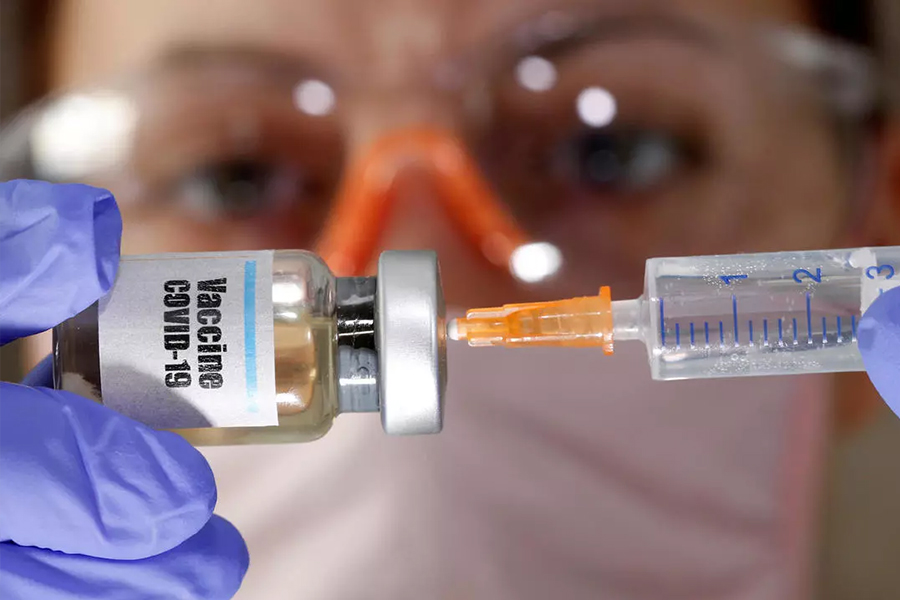



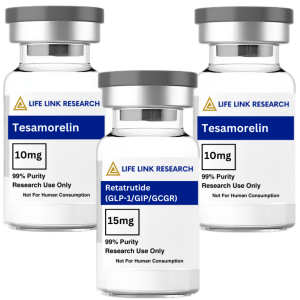
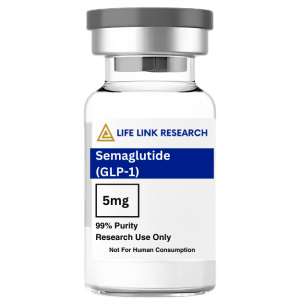
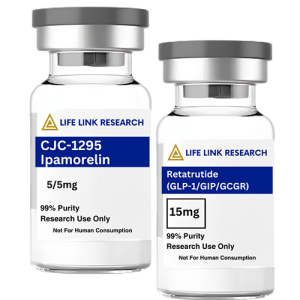
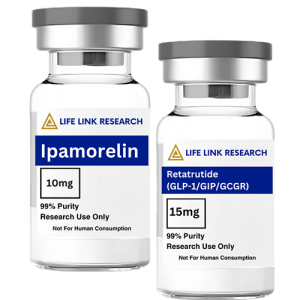
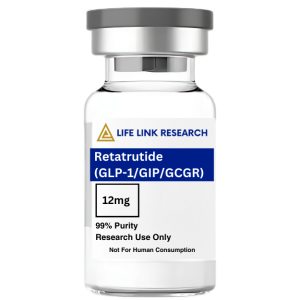


Reviews
There are no reviews yet.